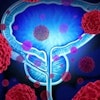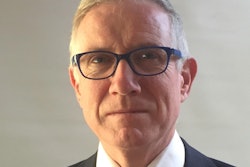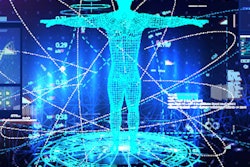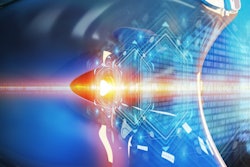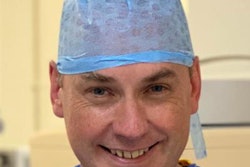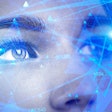
There's a serious danger the growth of artificial intelligence (AI) and the new working practices necessitated by the COVID-19 pandemic will lead to "the vanishing radiologist" becoming a reality, Dr. Adrian Brady has warned in a hard-hitting opinion piece.
"If we are hidden away in an office, rarely meeting patients or referrers, it is only a small step to being forgotten," he noted in an editorial posted on 10 February by European Radiology.
 Dr. Adrian Brady.
Dr. Adrian Brady."We will still produce reports, which will still be important, but we may find ourselves emerging from our bunkers in the future, troglodytes blinking as we encounter daylight, strangers to those with whom we once spoke, peripheral to any decisions about resources or planning, having lost our standing to others who have taken advantage of our invisibility," added Brady, who is second vice-president of the European Society of Radiology and consultant radiologist at Mercy University Hospital, Cork, Ireland.
A combination of technological developments, increasing workload, and changes in behavior mean there is a strong risk of radiologists becoming much less visible to referrers and patients.
"Let us not allow ourselves become the recluses of medicine," he wrote. "We cannot expect recognition for our contribution if we hide from view. By being aware of the risks and dangers of invisibility, we can mitigate them, and continue to represent our specialty positively, and in plain sight."
Impact of COVID-19
COVID-19 has led to greater "bunkering" of radiologists, which involves working behind closed doors to avoid the risk of infection and consequent depletion of available staff numbers, or so-called onsite distancing. Offsite reporting has also increased, and many radiologists have moved rapidly from a situation in which they had daily face-to-face contact with referrers and colleagues to one in which their only communication was over the phone, Brady continued.
"This made sense in the early phase of the pandemic; we needed to ensure the capacity of radiology departments to continue to function, and unnecessarily risky behaviour of key workers had to be curtailed. Furthermore, the use of online capabilities permitted maintenance of multidisciplinary conferences during the pandemic, preserving standards of care," he explained.
Radiology must not allow this way of working to become the norm, however. "The COVID pandemic is not normal life; medical practice mandated by it should equally not become the norm, beyond what is necessary in the (hopefully) short term," he wrote.
There are dangers that radiology may retreat or be pushed back into relative invisibility, and potential consequent peripherality, and technological innovations may ultimately work against the profession, he added.
The notion of working in peaceful isolation -- spending hours every day in front of a workstation, producing meaningful and valuable output before packing up and going home -- can be attractive, Brady conceded. Working like this can help to avoid what some people see as "the messy downsides" of having to interact directly with patients as individuals.
"In some circumstances, we may be more productive (if productivity can be counted in reports generated) in this type of environment. After all, we do not need much more than regular coffee and a dark room to do a lot of what we do," he noted. "But if we acquiesce in (or actively work towards) our work style becoming more isolated, solitary, and workstation-dependent, we do a disservice to ourselves, our patients, and our future colleagues."
The arrival of AI
The belief that radiologists can and will be replaced in the near future by AI algorithms is widely prevalent, and this may act as a disincentive to young doctors entering the specialty. Also, colleagues in other specialties may be led to believe that the work of radiologists can be done by algorithms acting independently, or directly by referrers supported by AI.
"It is up to us to make sure that we remain central to the use of AI in radiology, and to delivery of care in the AI era," Brady pointed out. "Above all, we must understand this new technology, ensure it is deployed safely and ethically, and that all involved grasp that it is a tool aiding better healthcare, not a replacement for human-led medical practice."
Many referrers view radiology as a service to be used much like laboratory tests: always and rapidly available, anonymously delivered, just another "test result."
"A friend of mine describes this as seeing radiologists as "FBC (full blood count) machines with a pulse," he wrote. "We have become hamsters on a wheel, running as rapidly as we can in one place, just to keep the wheel moving."
Radiologists must not allow digitization to entrap them in an ever-accelerating cycle of demand and speed, thereby reducing direct interaction with patients and referring colleagues and losing the benefits built up by these relationships, he added.
The teleradiology effect
Brady is concerned that teleradiology introduces further distance -- physical and metaphorical -- between radiologists and both referrers and patients.
"If used as a routine method of delivery of radiology service, teleradiology risks diminishing radiology's value reducing radiologists from direct participants in medical care to disinterested producers of outputs (reports)," he stated. "To avoid damage to our standing caused by the use of teleradiology, radiologists should work to educate payers and referrers that teleradiology is a valuable and helpful adjunct to on-site radiology service not a substitute for it."
On the plus side, however, multidisciplinary team meetings have moved radiologists to a central role in contributing to clinical decision-making.
"In many ways, the understanding of our role in adding value to healthcare is now at its highest level ever," he wrote.
Clinical practice has also changed in recent decades. Using investigations, including imaging, to support a bedside diagnosis (based on history-taking and clinical examination) has largely been replaced by a greater direct reliance on those investigations.
"In many circumstances, imaging has replaced (or at least reduced the use of) the traditional clinical tools of inspection, palpation, percussion, and auscultation. This has undoubtedly enhanced clinical care, and, pari passu, the centrality of radiology in medicine," he pointed out.



